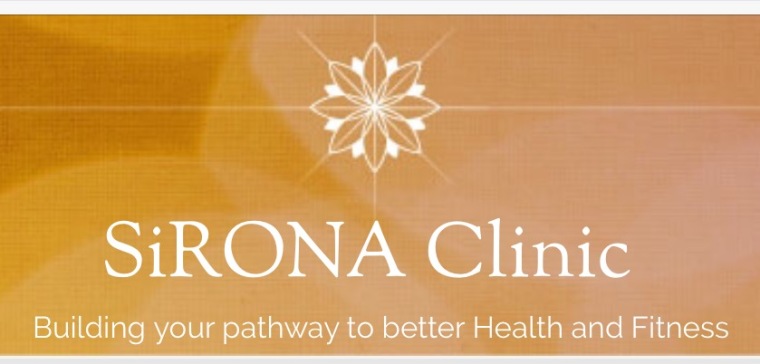
Digital Marketing Strategy Level 5 Project
The project is to devise a digital marketing campaign for a business/organisation. In this project you need to demonstrate an understanding and the application of a digital marketing plan in an organisation.
 The SiRONA Clinic is a small multi-disciplinary natural-healthcare clinic in Douglas, Cork City.
The SiRONA Clinic is a small multi-disciplinary natural-healthcare clinic in Douglas, Cork City.
The business was established sixteen years ago by the sole owner Karen Bourke. Karen is a Pilates Instructor and a registered Physical Therapist (with 20 years background in ballet).
The Clinic has five rooms for private patient care, where up to fifteen different qualified healthcare professionals from varied disciplines such as physical therapy and pilates (amongst many others) rent a room at various times to look after their own clients.
These healthcare professionals work together to provide a comprehensive approach to dealing with a wide range of injuries and conditions. The many services the Clinic provides include:
- Physical Therapy
- Pilates
- Chiropractic Care
- Chiropody
- Acupuncture & Chinese Medicine
- Kinesiology
- Counselling & Psychotherapy
- Neuropsychology
- Play Therapy for Children
- Clinical Psychology
- Reflexology
There are two primary healthcare professionals resident in the clinic on a full time basis. The Business Owner (Karen Bourke) and a Physical Therapist (Gary Ahern). The other thirteen therapists reserve different rooms from 1 hour per week to up to 8 hours per week. Each therapist pays a rental of their room (depending on occupancy) to the Business Owner.
The Business Owner approached me to undertake a Digital Marketing Strategy for the Clinic. Business is ticking over but she is looking toward the future and realises that she needs to embrace the digital age and build up her business more. She readily admits that she is not “technical” and has little knowledge of websites, social media or online marketing. However, she is fully aware that this is the space she needs to be, to grow her business and is seeking all the help she can get to achieve this.
The day before our first meeting, the Business Owner read an article:
“According to Google, 97% of consumers use the web to search for local businesses – and if the vast majority of your potential customers are online, you should be, too. Having a strong online presence is a crucial component of your marketing strategy, no matter what size your business is or what industry it belongs to.”
Timing is everything, and this has reinforced the need to drive on with a new Digital Marketing Campaign.
I met with the Business Owner to discuss the Digital Marketing Campaign, outline how I would plan my strategy and seek her approval to go ahead with devising and implementing such a campaign for the SiRONA CLINIC.
The first meeting on 5th February is well documented (see attached Client Management Appendix) and subsequent meetings were scheduled for at least every fortnight and some weekly, as required (all documented in the Client Management Appendix).
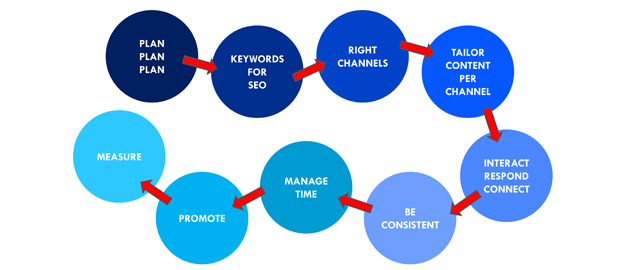
The purpose of a digital marketing plan for this business is to force us through the process of researching and clearly articulating the aims and goals of our digital initiatives, along with clearly targeting digital personas, and methodically choosing which channels to go after them and how.
I have broken the process down into four main areas:
- Analysis
- Development
- Implementation
- Control
1. Analysis:
 Before I agreed to take on the task of producing and implementing a Digital Strategy for SiRona Clinic, I did a quick analysis of what I was facing into. This is what I established:
Before I agreed to take on the task of producing and implementing a Digital Strategy for SiRona Clinic, I did a quick analysis of what I was facing into. This is what I established:
There was:
- No strategic approach and no strategy in place
- No evidence of a Performance Improvement Process and No KPI’s
- Strong Management Buy-In to introducing a Digital Marketing Campaign
- No resources available and no structure in place to promote skills for a campaign
- Little or no pro-active communication with existing client-base
- Website in place but not integrated and under utilised
- No Social Media
The Business Owner was aware of all these issues and was fully supportive and committed to address whatever needed to be done to ensure the success of the Digital Marketing Campaign.
So we were off.
1.1. Identify Target Market Segments:
 My first task was to understand who and what the customer of SiRONA Clinic was. Who will the Clinic be selling to and why should they buy a product or service from SiRona Clinic instead of anywhere else.
My first task was to understand who and what the customer of SiRONA Clinic was. Who will the Clinic be selling to and why should they buy a product or service from SiRona Clinic instead of anywhere else.
As an existing established business, the Clinic already has a good customer base. I met with the Business Owner and she gave me a quick overview of the type of regular customers she has. In order to keep up with the clinics’ customers’ wants and needs and expectations, we agreed that we will need to carry out some form of market research.
My first step in identifying the target market for SiRONA Clinic was understanding what products and services the clinic had to offer to a group of people or businesses. To do this, I needed to identify the product or service’s features and benefits.
The clinic has many services, including:
- Physical Therapy
- Pilates
- Chiropractic Care
- Chiropody
- Acupuncture & Chinese Medicine
- Kinesiology
- Counselling & Psychotherapy
- Neuropsychology
- Play Therapy for Children
- Clinical Psychology
- Reflexology
For the purposes of an effective Digital Marketing Strategy (and this project), it was decided to concentrate on the primary income generator for the business which was Pilates. The Clinic owner, is also the Pilates Instructor, and up until now the Pilates Classes were conducted off site (in a local girls school). But costs were/are rising and the Business owner wants to utilise the rooms in the Clinic more (there is a new room built specifically for Pilates Classes) – so it seemed like a logical decision to concentrate on this service in the first phase of the campaign.
Pilates is a system of exercises using special apparatus, designed to improve physical strength, flexibility, and posture, and enhance mental awareness. The benefits to the customer is improved physical strength, flexibility, and posture, and enhanced mental awareness.
The clinics customer base covers a broad range of the market, including both sexes and all ages groups.
1.1.2 Segment the Overall Market:

It was a natural instinct for me to want to target as many people and groups as possible. However, by doing this my promotional strategy will never talk specifically to any one group, and I will most likely turn many potential customers off. The promotional budget will be much more cost effective if I promote to one type of customer and speak directly to them. This allows the business to create a highly focused campaign that will directly meet the needs and desires of a specific group.
I divided the market into smaller target market segments on the basis of geographic, demographic, psychographic and behavioristic characteristics:
Demographic: During my many meetings with the business owner, we agreed that the target market for the purposes of this campaign would have a demographic of aged between 30-45 yrs and this is further supported by the results of our research (see questionnaire results below).
Geographic: Ideally the primary location would be the location of the clinic, ie greater Douglas area but we would include the surrounding areas and Cork City.
Psychographic: The desire for status, enhanced appearance and more money are examples of psychographic variables. Eg Lifestyle; Fun-Seeking; Trendy; Hobbies; Sports Enthusiasts etc.
Behavioristic: How many classes will they purchase? Number of times they will purchase? Timetable of purchase, every week, month, quarter, etc.? Amount of classes purchased (ie single class or block of six)? Where customer purchases and/or uses product/service?
I looked at the various types of collecting research and selected:
- Questionnaires and
- Interviews
as my two main methods of information/research.

1.1.3 Questionnaires:
A Google Doc Questionnaire was emailed out to a sample group from the existing client base: https://docs.google.com/forms/d/1Igp0I3-MkS9bxrqpk8T8JdnNEkmDqz8U8W_iRB6L1M8/prefill
The Feedback from the sample group was poor (the group complained that the form was was not user friendly and it was cumbersome). This is an email from one of the sample group:
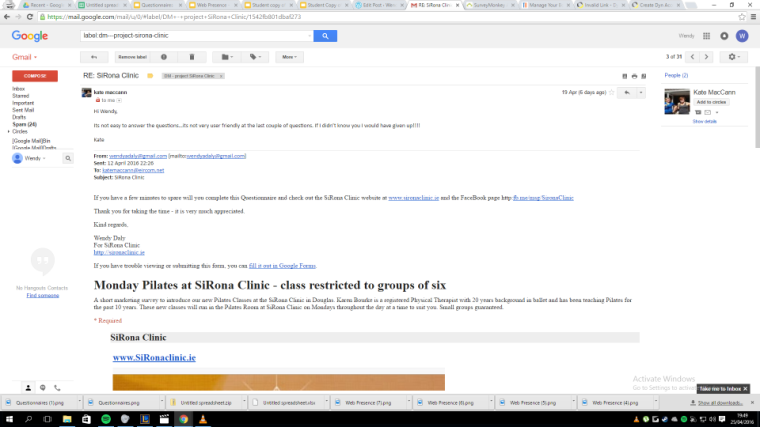
So it was time to re-view my strategy and on to Plan B and Survey Monkey. This had better feedback and was launched to a group of 50 from the existing clientbase. This is the Survey:
The following is an extract of the results from the Monkey Survey:
All respondents were interested in new Pilates Classes in the Clinic: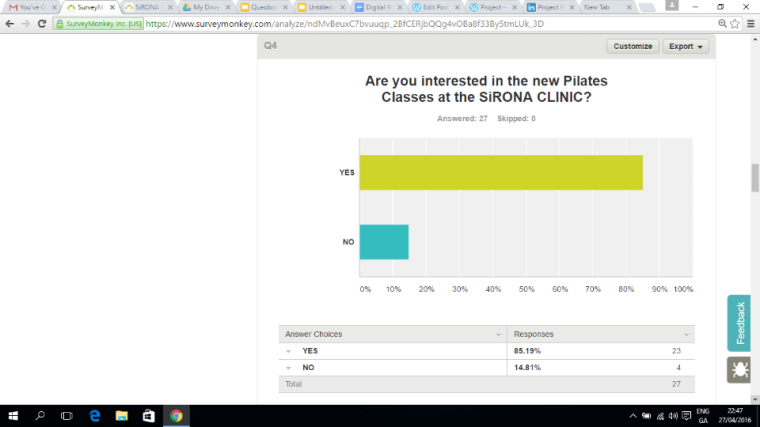
Monday was certainly the most popular choice of day for Pilates with 43% giving Monday as their first choice:
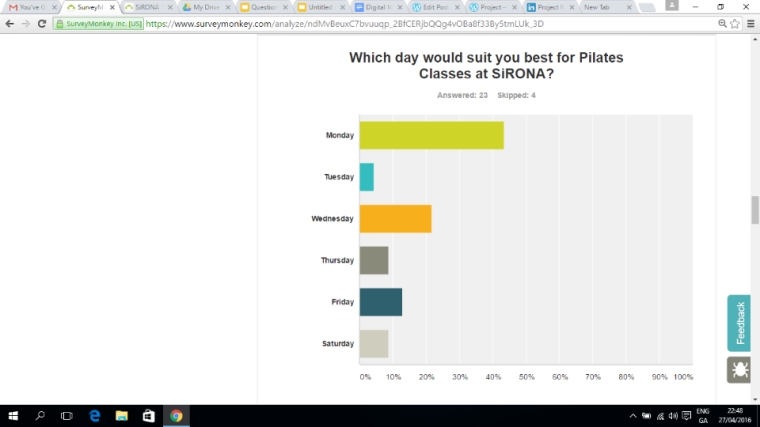
Early morning times 9am to 10am and 10 am to 11am were popular as well as 5pm to 6pm. There is sufficient feedback to organise new classes at these times:
All survey customers were asked if they used Social Media, 48% use FaceBook so that has decided which Social Media we will use for the campaign. I feel it would be a good idea to incorporate one more Social Media network at the initial stages and review progress over time:
This is the Feedback and stats collected from the Survey:

1.1.4 Interviews:
I spoke with a number of customers of the clinic face to face and sought their feedback. The results can be summarised as follows:
|
Results of Interviews with 20 existing Customers of the Clinic: |
|||
| Preferred Time Slot: | Occupation Type: | Percentage Response: | Social Media Preference: |
| 6am to 8am | Professionals, self employed etc |
6% |
FaceBook, Twitter, LinkedIn |
| 8am to 10am | Early morning mums, employed etc |
8% |
FaceBook, Twitter, LinkedIn, Snapchat, Instagram |
| 10am to 12 noon | mums dropping to school (30-45yrs) |
25% |
|
| Midday (12 – 2pm) | Professionals, self employed etc |
12% |
FaceBook, Twitter, LinkedIn |
| 2pm to 5pm | Part-time workers and 50 yrs plus |
22% |
|
| 6pm to 9pm | Full-time workers (30-45yrs) |
27% |
FaceBook & Twitter |
|
9pm to 10pm |
nil | nil | |
With 74% in the 30-45 yr age bracket and actively using FaceBook, this has reinforced my decision to open a FaceBook page for the business. As previously stated above, I have also decided to try Twitter and monitor how that goes also.
After defining the different segments within the target market, I needed to further analyse the following questions:
- What budget was going to be allocated to a Digital Marketing Campaign? A concentrated advertising campaign to reach one market segment is likely to be more effective than a diffuse campaign attempting to reach two.
- What segments are my competitors covering?
Should I concentrate on an service that they do not seem to be tapping into? With the exception of the Pilates Companies, the Physio Clinics in the immediate area do not provide Pilates services.
As the clinic provides so many services, it may be better for the Campaign to concentrate on one segment for now, and expand to others when the initial segment has been successfully penetrated. Developing new markets takes a greater commitment of time, money and energy.
1.2 Identify suitable Digital Marketing Channels:
1.2.1. Static and Interactive Websites:

The Clinic already has a website. It is basic enough and requires some improvement. I am not a web designer and the budget will not stretch to a professional web designer in this case, therefore it was necessary to get a crash course in business websites and what was important.
These are the questions that needed to be established, before we could commence.
Is the website:
- Well Designed? – some improvements are necessary
- Easy to Use? – navigation could be streamlined and made more simple (with the addition of more obvious buttons/drop-downs where user would expect them)
- Well Optimised for Search?– SEO is poor at 16%
- Optimised for Mobile Visitors? – No
- Incorporating Social Sharing Features? – No
- Business Location clearly designated? – No
- Multiple Options to Contact the Business? – requires updating (some Therapists have left the clinic)
- Clear Calls to Action across the site? – No
1.2.2 Blogs:

Blogging for a business is certainly not a new idea, but it is still effective at engaging in and showing the search engines what’s hot in your business. Every company needs a blog or similar as a hub for publishing content and offers. SiRONA Clinic is no exception. A Blog will go a long way to engage new and existing customers to the Clinic.
1.2.3 Social Media:

The Clinic has no Social Media presence. When building our social media strategy for this business, it helps to learn from what other people in this industry are saying and doing. When it comes to the social media marketing plan, there’s no need for me to re-invent the wheel. Instead, I can take advice from businesses that have found success when using social media . Whether it’s gaining more followers or increasing customer engagement, businesses around the world are discovering ways to how social media is contributing to success and growth.
1.3 Develop the best fit of the digital campaign to integrate with any traditional marketing strategy in the organisation:
1.3.1 Social Media Marketing:

I will need a powerful tool for advertising on the appropriate online social network. We will need to promote the Pilates Class to the particular targeted audience 30-45yrs (refer to our research above).
These are the most popular options:
- Facebook, Twitter, LinkedIn, Google+, YouTube, Instagram, Vine, & Pinterest

I discussed the many types of Social Media with the Business Owner and while she has had no experience with Social Media, she is aware of the importance and value attaching to an effective Social Media Marketing. She had recently attended a FaceBook workshop (one day event) together with five other therapists from the clinic.
The most appropriate Social Media presence for this business type would be FaceBook, Twitter, Google+ and LinkedIn. Having discussed the options with the Business Owner, and following on from our Questionnaire and Interview feedback, we agreed that we would start with a FaceBook and a Twitter presence and see how that goes and review in 3 months with a view to adding more Social Media options.
As a professional therapist, the Business Owner was keen to keep the website very professional and simple with minimum Rich Media attaching.
1.3.2 Email Marketing:

There is no existing pro-active communication with the clientbase of the Clinic (apart from text messages to confirm or alter class time). As email marketing is an efficient way to stay connected with your clients while also promoting your business. I looked at the various email marketing providers and we choose the MailChimp for its simplicity and of course its free to use.
The new MailChimp account will be very useful in the future for connecting with the existing customer base and all new customers will be required to give their email address. There will be campaigns run via social media to encourage customers to sign up and give us their email address also.
The completed Questionnaires as discussed above have also given the clinic a new bank of names and emails to use for marketing purposes.
1.3.3 Pay-Per-Click Advertising (PPC):
 We will require a Google AdWords account for the Clinic.
We will require a Google AdWords account for the Clinic.
Adwords allows us to advertise on the Google search results pages (and the network of partners).
We will require Google AdSense for the Clinic also.
AdSense is a program run by Google that allows publishers in the Google Network of content sites to serve automatic text, image, video, or interactive media advertisements, that are targeted to site content and audience. These advertisements are administered, sorted, and maintained by Google. They can generate revenue on either a per-click or per-impression basis
These eTools will assist in delivering highly targeted traffic of potential customers within a short time frame. Google AdSense is a free service.
1.3.4 Display Advertising:
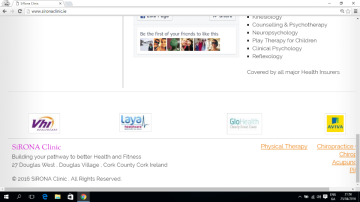
Initially we will go with Health Insurers VHI, Laya Healthcare, GloHealth & Aviva to help promote the Brand and enhance the professional fee of the website. The aim of the campaign is to raise our profile and brand with a view to attracting advertising. This will be reviewed in three months.
1.3.5 Search Engine Optimization (SEO):
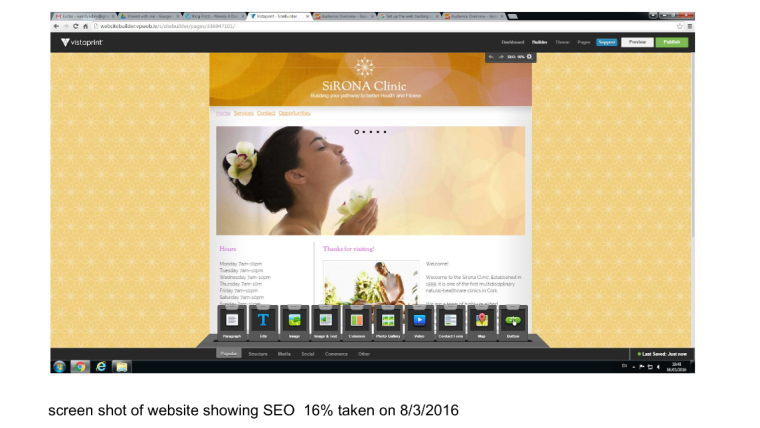 The SEO rate of the website at Analysis was 16%.
The SEO rate of the website at Analysis was 16%.
By using keywords and keyphrases in the business web page, we will help Search Engines find the business more easily.
1.3.6 Content Marketing:

This clinic will benefit hugely from content marketing such as text, graphics and videos. Good, high quality and relevant content in this website will bring more traffic.
The Clinic Owner has agreed to write regular Blogs for the website and these will cover a broad range of topics such as Health & Fitness, Pilates Benefits, Pilates Teacher Tips, Healthy Eating with new Recipes etc.
1.4. Establish and justify targets for the campaign, such as pages visited, SEO ranking, volume of online sales:
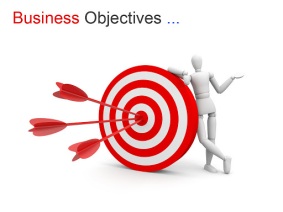 From my many meetings with the Business Owner, we have established clear business objectives. These include:
From my many meetings with the Business Owner, we have established clear business objectives. These include:
- Increase brand awareness
- Increase sales
- Increase customer retention
- Reduce cost per lead
- Reduce cost per acquisition of new customers.
My next step was to deconstruct these business objectives down into digital goals. I keep in mind that there are three key performance indicators (KPIs) that should always be considered when measuring an SEO campaign’s effectiveness:
- Rankings
- Traffic
- Conversions
In some ways, I am fortunate that with no existing digital presence, I can only improve things with the digital goals being set, however, I want to set challenging targets that are also achievable, to make a meaningful difference to the business.
 The goals and digital objectives for the campaign have been agreed as follows:
The goals and digital objectives for the campaign have been agreed as follows:
- Increase the Clicks to the business website by 5%
- Increase the conversion rate to the business website by 3%
- Get 5 new Likes per week on the new business FaceBook page
- Get 3 new Followers per week on Twitter
- Increase your Click Through Rate by 1%
- Reduce Bounce Rate by 1%
- Increase Customer Base by 5%
- Improve Brand Awareness
- Increase SEO ranking from 16% to 85%
2. Development:
2.1. Working with others in the organisation:
Having met with the Business Owner many times, it quickly became clear to me that the KPI comes from income generated from the Pilates business and also the rental income from one of the Therapists who operates from the Clinic full time.
I have recorded all meetings with the Business Owner and met with one other Physical Therapist on 14th March 2016 – Minutes attached. This Therapist has a different focus on therapy and for the purposes of this initial launch of the campaign, it was agreed not to include this at the outset.
There is some concern from the other Therapists that we are focusing on just the Pilates side of the business, so we have agreed to be fully inclusive of all the different therapies available, after a period of three months from the launch. However, it must be noted the enthusiasm displayed by all of the Clinics Therapists will further drive the digital goals when they are established and fully operational.
During the communication process with the people in the business, we discussed the following Process Flow Map and how the integral the Social Media presence was together with Quality Content and a good Website:

2.2. Author, or cause to be authored, the web presence which will deliver the online content, with particular attention to search engine optimisation:
2.2.1 Content:
 Content Marketing is all about creating a shared experience—one that’s fun, informative, and/or entertaining to the Followers of the Business. We have already established our targeted audience and understanding and catering to our audience is a very important second step in the process.
Content Marketing is all about creating a shared experience—one that’s fun, informative, and/or entertaining to the Followers of the Business. We have already established our targeted audience and understanding and catering to our audience is a very important second step in the process.
During our discussions, the Business Owner has made it clear that she will be pro-active in writing the content for the websites Blog. However, she needs direction and I have given her a few pointers and referred her to Jeff Bullas: 20 Things to Remember for Writing the Perfect Blog Post
We discussed how the Content marketing’s purpose is to attract and retain customers by consistently creating and managing relevant and valuable content with the intention of changing or enhancing consumer behavior. We both know that it is an ongoing process that is best integrated into the overall marketing strategy, and it focuses on owning media, not renting it.
We already have the website in place, with the agreement of the Business Owner, small changes/enhancements have been made.
2.2.2 Search Engine Optimisation S.E.O.:

The Website has not been optimised for SEO. We will need to use keywords and keyphrases in the web pages in order for Search Engines to find this business more easily.
The Business Owner and I met to discuss the reasons why SEO is so important and what we need to achieve and how (refer Client Management attached).
I started with the SEO basics and updated the website to ensure that there was unique, accurate page titles (including page title tags and page title contents).
I ensured that there was a maximum use of the “description” meta tag and that summaries could be defined for each page.
The Site Structure was good and it had a URL that is easy for users and search engines to understand SiRona Clinic
URL: http://www.sironaclinic.ie/
I made some alterations to the website to ensure it was easy to navigate, thereby ensuring that visitors quickly found the content they wanted and I put an HTML site map page on the site.
The Content of the website is in an easy-to-read text that is primarily for the business users and not search engines. I have improved the anchor text by chosing descriptive text that is more consise.
Heading tags have been used appropriately.
As the majority of users coming to the site are likely to be using a mobile device, it was necessary to Optimise for Mobile. The website is now optimised for Mobile Phones:
2.2.3 Pay-Per-Click Advertising (PPC):
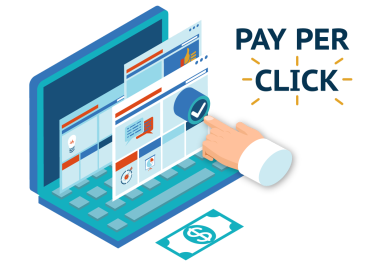 A Google AdWords account and a Google AdSense account was opened for the Clinic website.
A Google AdWords account and a Google AdSense account was opened for the Clinic website.
The difference between Adwords and Adsense is that adwords allows you to advertise on the Google search results pages (and the network of partners) while Adsense is the platform to use as a publisher to display Google Ads on your website.
These two eTools will assist in delivering highly targeted traffic of potential customers within a short time frame. Google AdSense is a free service.
2.2.4 Keywords and KeyPhrase Analysis:
 Identify Your Keyword Phrases – I researched and identified what keyword phrases my target market uses to search for products or services like SiRONA Clinic:
Identify Your Keyword Phrases – I researched and identified what keyword phrases my target market uses to search for products or services like SiRONA Clinic:
- natural health care in Cork
- Pilates Classes in Cork City
- Pilates and Physiotherapy in Cork
- Pregnancy Pilates Classes Cork
- Physical Therapy in Douglas Cork
- Physiotherapy in Cork
- Physio Cork Saturday
I analysed Google’s Top Sites for the perfect Keywords and Keyword Phrases for each individual page in the business website.
2.3. Design the text, graphics, multimedia, aesthetic livery and marketing collateral to be used on the web presence:
2.3.1 Content:
 The Business Owner is in dread and fear of the whole process of creating, organizing and managing great or remarkable content for her site. Perhaps she still sees her website as a static brochure rather than as a living 24/7 online sales and marketing business asset. In tandem with that she has the best of intentions and simply freezes when it’s time to put fingers to keyboard. As she does not “do” Social Media, she assumes that her customers aren’t consuming content online.
The Business Owner is in dread and fear of the whole process of creating, organizing and managing great or remarkable content for her site. Perhaps she still sees her website as a static brochure rather than as a living 24/7 online sales and marketing business asset. In tandem with that she has the best of intentions and simply freezes when it’s time to put fingers to keyboard. As she does not “do” Social Media, she assumes that her customers aren’t consuming content online.
We had some educating to do. The first thing to help alleviate the overwhelming feeling of panic was to simplify the task and start the process with her own digital properties, ie the business website and blog. If we concentrate on getting the website set up correctly and the Blog up and running, from there, we can connect to the different social network satellites which the business dosen’t own, but which are similar to real world social hangouts.
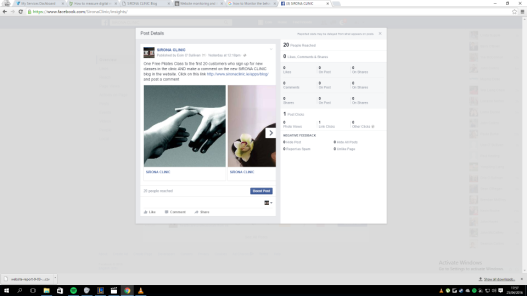
We discussed how great content tends to be synonymous with high quality, highly relevant content that visitors crave and yearn to encounter in search results. We agreed that it tells your story with authority and credibility. It tends to be thorough and not stingy in length. It’s exactly what Google strives to present in search results.
At the heart of learning how to create great content for the website and blog are words. Words, though, become stronger with images and videos. Images catch the eye and draw it in to consume words. Images help to make a point.
I have included images on all the web pages and content offers. It is important to ensure that no blog article is published without an image. It is important to include <alt> text to help describe the image also.
The new Business Blog:
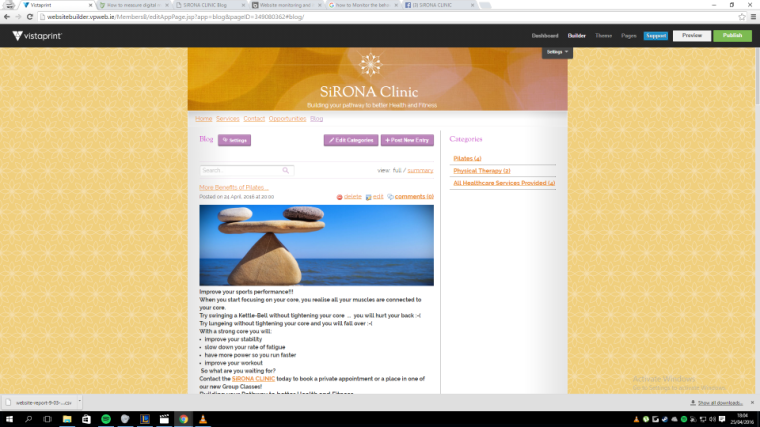 Starting with our website, the Business Owner gave me an outline of the Content for the Blog and I adjusted/updated same to ensure it was high quality and relevant and interesting.
Starting with our website, the Business Owner gave me an outline of the Content for the Blog and I adjusted/updated same to ensure it was high quality and relevant and interesting.
We already know that People want to buy from People. So we have offered them content written by the Therapists that the customer will ultimately buy from. This is more believable; it’s simpler and it alleviates frustration. We have used photographic images where the existing customers are in a Pilates Class environment. They are the stars!
We will use our content to communicate how alive our company is and how much it cares about delighting customers.
This business blog is our chance to show the slightly more casual and personable side of our brand.
First Website Blog:
Please refer to the website for more examples of the many Blogs published:
The extended 7 P’s Marketing Mix:
While the Clinic has not had any formal marketing strategy to date, the business has a strong focus on the The extended 7 P’s Marketing Mix:
- Product – multi-disciplinary natural-healthcare clinic
- Place – great location
- Price – good value
- Promotion – needs more focus
- People – highly trained professional therapists
- Processes – professional and efficient
- Physical Evidence – great feedback
The presence of all 7 P’s is very much evident in the caliber of the Therapists within the Clinic and the professional ethos and strapline of the Clinic:
“Building your pathway to better Health and Fitness”
The most obvious P to focus on in the new Campaign is Promotion.
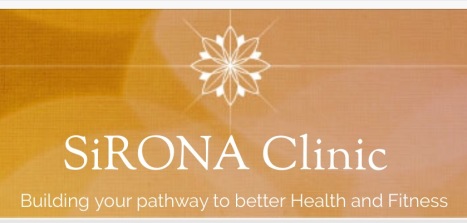 We discussed the physical building of the clinic and the requirement for new branding for the outside. It is not evident from the outside door name plate what exactly is going on inside. The Business Owner has now ordered new signage to rectify this.
We discussed the physical building of the clinic and the requirement for new branding for the outside. It is not evident from the outside door name plate what exactly is going on inside. The Business Owner has now ordered new signage to rectify this.
2.3.2 Aesthetic livery and marketing collateral to be used on the web presence:
I am not a web designer but the following updates this much I knew from analysing the website:
This is what I have decided to work on from the early analysis:
- Well Designed – aesthetically pleasing website will woo visitors to the site and a well designed website will be more likely to appeal to search engines
- Easy to Use – navigation should be simple with obvious buttons/drop-downs where user would expect them
- Well Optimised for Search – SEO is essential to earn traffic to your website and I have covered this in more detail below
- Optimised for Mobile Visitors – over the past year mobile browsing has surpassed desktop browsing – every website needs to be optimised for mobile
- Incorporates Social Sharing Features – readers should be able to share your content with their networks – particularly if you have Blogs
- Business Location clearly designated – always have a Contact page with the business address on it and a map if possible
- Multiple Options to Contact the Business – this should include telephone, email and a form and should be easy for the customer to find
- Clear Calls to Action across the site – eg “book your Pilates class now”
With the information to hand, I set about making a few alterations to the existing website:
- I simplified the Home Page and made the business logo stand out more – taking away most of the busy writing around it. I re-arranged some of the material in a more aesthetically pleasing way.
- I introduced simple menus which would ensure navigation was more streamlined.
- The website was not optimised for search and had a score of SEO 16%, With the help of the SEO Booster Dashboard on the VistaPrint website, I was able to increase the SEO instantly to 80%
- The website was not optimised for Mobile. This has now been corrected.
- The business had no Blogging or Social Media Accounts. We have added a Blog to the Website and a link to the new Business FaceBook Page.
- The Business location has now been added to the home page together with google maps for ease of finding. There is also a separate Contact page with the location and map
- A form has been included on the website with multiple references to Mobile Contact Numbers and an email address for the business.
- There is now a clear call to action “book your Pilates class now”
2.4. Organise third party testing of the web presence to ensure that it is generating its intended effect, and incorporate any agreed amendments:
Before the launch of the Digital Marketing Campaign, I asked six independent observers to investigate and deliver constructive feedback on the web presence so far. They were each requested to look at the website and the facebook page with a view to establishing how it fulfilled the requirements under the following headings:
- Accessibility – is it easy to navigate? Feedback – Yes
- Content – is it interesting and relevant? Feedback – Social Media & Blog require more Content
- Colour – is the colour scheme and images interest and pleasing? Feedback – Yes
- Layout – clean and consise layout? Feedback – Yes
3. Implementation:
3.1. Produce the text, graphics, multimedia, aesthetic livery and marketing collateral to be used on the web presence:
I produced the marketing material that was to be used on the web presence:
Content:
The website has been updated and the content on each page is relevant and interesting. The Blog and Social Media posts are generating much interest:
 Text:
Text:
The blog is now live and there is a variety of new posts bringing plenty of traffic to the website:
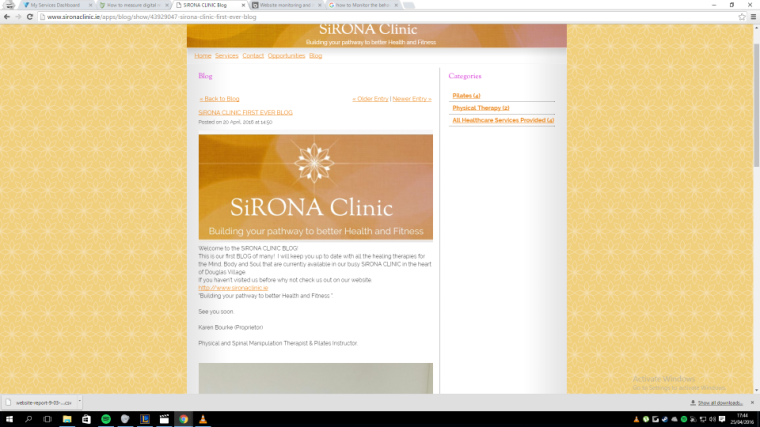
Graphics:
There is a large variety of graphics on the website, and social media:
Logo:
Our Branding is now sharp, with a logo that is consistant across all our web presence, ie website, blog, FaceBook and Twitter. This Logo includes our strapline “building your pathway to better Health and Fitness:
3.2. Commission the web presence in line with any launch schedule:
Launch Date was April 11th – I ensured that there was enough material across all mediums to keep the interest of any visitors to the website, blog, facebook and twitter:
FaceBook Page for SiRONA CLINIC:
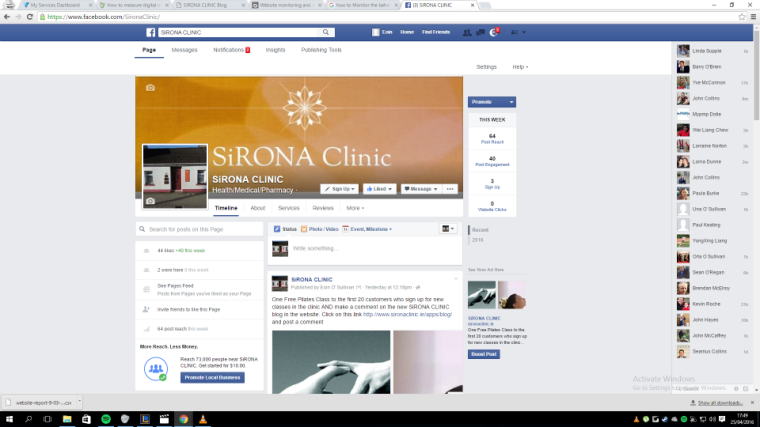
Twitter Page for SiRONA CLINIC


4. Control:
4.1. Monitor the technical behaviour and user experience of the web presence, using webhost control panel tools:
I monitored the behaviour and user experience of the web presence using the eTool on the Vista Print Business Website.
There were 139 Pageviews in the last 30 days:
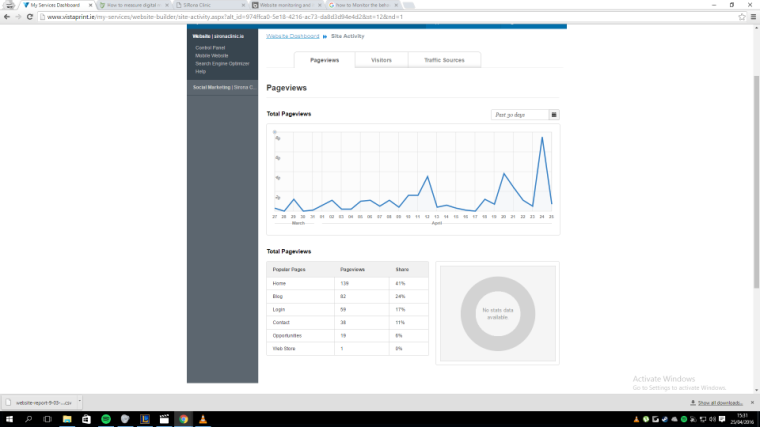
This compares with 82 PageViews for a similar period in December:
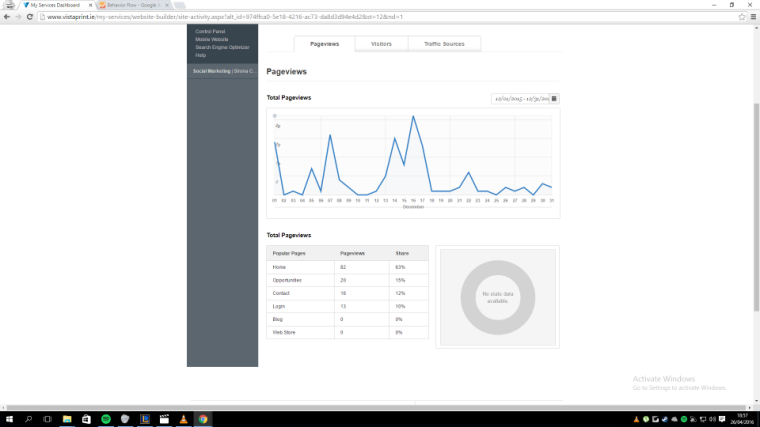
With 82 Pageviews on the new BLOG launched on the website only two weeks ago.

Under the Traffic Sources, I can see that there were a total of 159 Referrals. 38% from Links, 37% from Directs and 16% through a Search

The bulk of the links are from Google Search Engine:

The Search can be further broken down as follows:
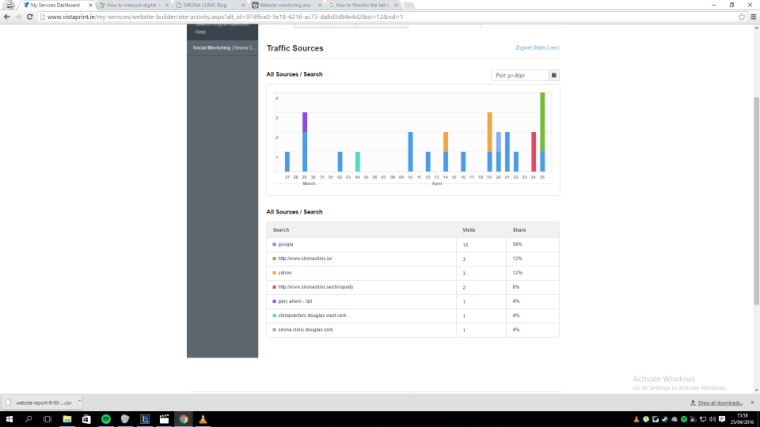
A total of 13 referrals via Social Media, 85% from FaceBook and 15% via Twitter. We will need to grow this area.
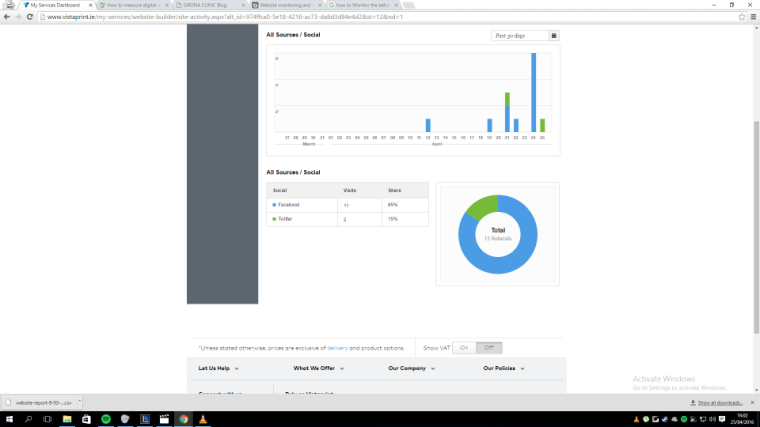
Social Media:
The new Business FaceBook page has been very successful. With 64 Post Reach and 40 Post Engagement.
The challenge here is to continue to hold the interest of the Follower and keep engaging with the Clinics Customer base – while enticing new customers to visit the site and read more about the business.
From the Facebook Analytics I can see that our traffic are mostly Women aged 35-44 who access their FaceBook page from their mobile device. We will utilise this information to focus our future Facebook posts to this gender and age profile who are busy and on the go:
 The new Twitter Account is slow to take off, but I expected this. We will continue to monitor progress and review again in 3 months:
The new Twitter Account is slow to take off, but I expected this. We will continue to monitor progress and review again in 3 months:
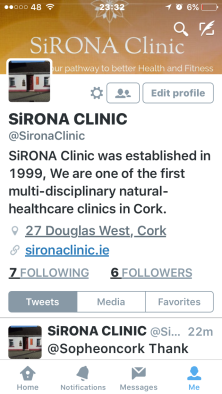
4.2. Monitor the web presence traffic and user interactions with different elements to determine which elements are performing to expectations:
I have set up Google Analytics on the business website to track the SEO and how we are performing against our Objectives, Goals and KPI’s:
I can see that in the last month, there was 74 Users, with 281 PageViews with a Bounce rate of 56%. I am very pleased with these figures and particularly the Bounce Rate. That shows me that customers are happy with their landing pages and are likely to return:

The analytics further show me that 45% of the 101 sessions were accessed via an organic search. This shows me that the SEO is working and my Keywords and Keyphrases must be doing their job:

The FaceBook Page is generating good traffic to the website – 16 sessions:

The Behaviour Overview shows me the Landing Pages tell me where the visitors first enter the site and I have pleased to note that the new Blog is generating a good level of interest. Also I can see from the Unique Pageviews—The number of individual people who have viewed a specific page at least once during a visit. For example, if a single user views a page more than once during the same visit, only the original view is counted (whereas general Pageviews count each visit). The Unique Pageviews metric counts each page URL + Page Title combination:

The Behaviour Flow Chart lets me see the path visitors commonly take to the website—from the first page they view to the last page they visit before leaving your site.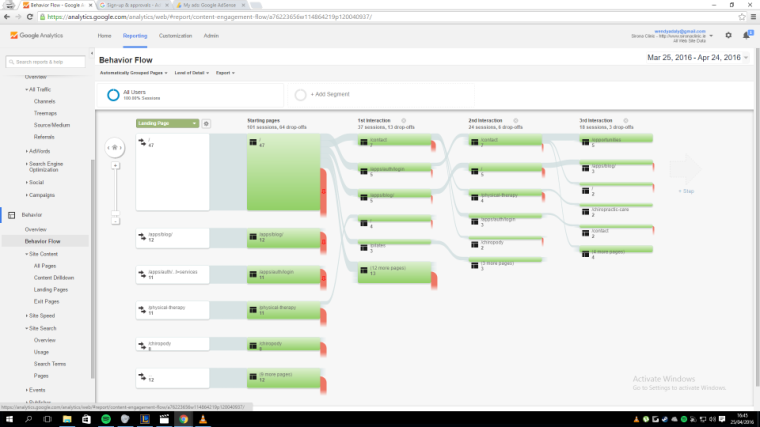 I am interested to note the Blog is still generating interest but so is Physical Therapy and also Chiropody!
I am interested to note the Blog is still generating interest but so is Physical Therapy and also Chiropody!
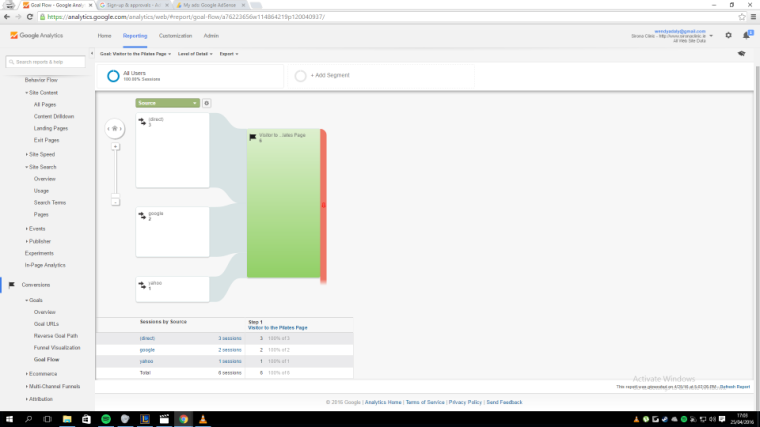
The goals and digital objectives for the campaign were agreed as follows: Are we meeting our goals?
Increase the Clicks to the business website by 5%: Visitors to the website have increased from 82 (Dec 2015)
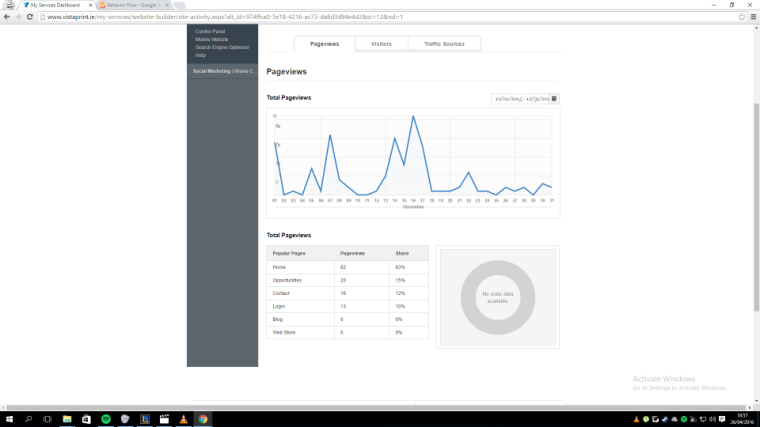
to 149 (April 2016):
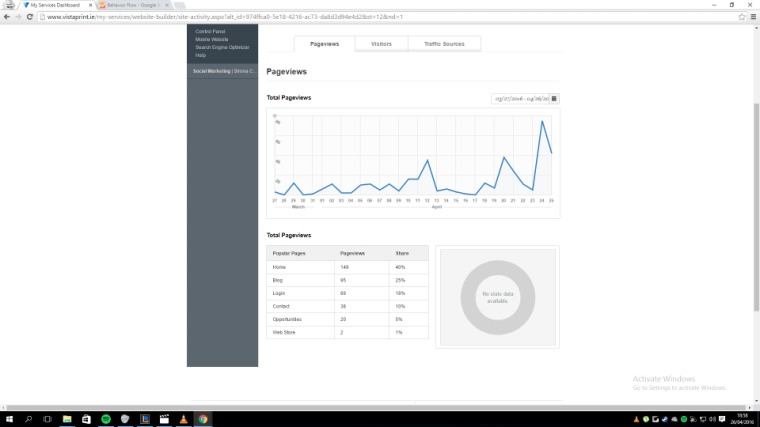
Increase the conversion rate to the business website by 3% – Still a work in progress, but heading in the right direction:

Get 5 new Likes per week on the new business FaceBook page – definitely achieved – 42 likes this week!
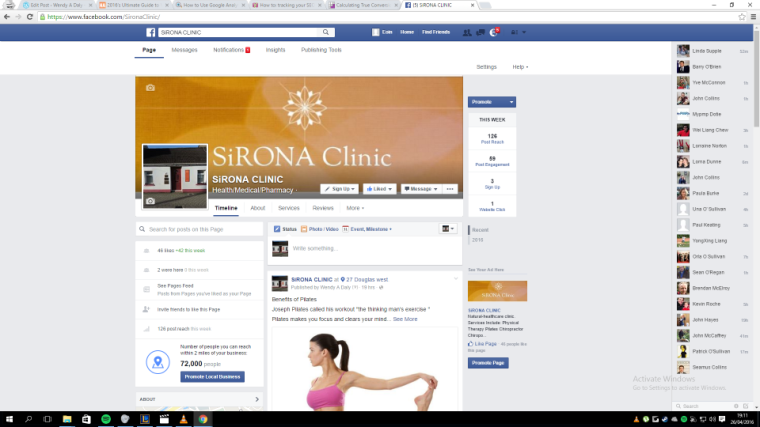
Get 3 new Followers per week on Twitter – Achieved 6 Followers to date:

Increase your Click Through Rate by 1% – no success yet. More work needed on this.

Reduce Bounce Rate by 1% – I have no baseline to compare and will review this monthly with a new baseline of 59%:

Increase Customer Base by 5% – to early to tell yet – monitor weekly and monthly and review
Improve Brand Awareness:
This has certainly been achieved through the updated Website, the new Website Blog, the new Business FaceBook page and the new Twitter Account:

Increase SEO ranking from 16% to 85%: target not yet achieved, but some tweaking yet to do on the website which will increase the SEO even further:

The above are our KPI’s and I am happy that we are heading in the right direction. There are a number of Goals/Objectives that I would like to amend/update:
- Followers on Twitter – not realistic to expect 3 new Followers per week as our customer base does not appear to be using this Social Media. Reduce this goal/objective to 1 per week.
- Likes on FaceBook – great activity here as alot of our target market appear to be on this Social Media forum. Increase this goal/objective to 10 per week. Monitor regularly and adjust where/when necessary.
- Click Through Rate – more focus on getting this increased is now required as a matter of urgency. Speak with Business Owner and involve others in the Clinic. Re-visit AdWords, Keywords and Keyphrases.
4.3. Monitor the competitive ranking of the web presence across a range of search engines and search terms:
I cleared the Browser History and the Clinic is ranking on Page 2 of Google Search Engine under the search “pilates in Douglas”. This shows me the SEO has been effective.

Ranking on Page 6 in Yahoo Search Engine. More work to do on this one:

Ranking on Page 1 in the Bing Search Engine. I am very pleased with this outcome:

Keywords & Keyphrases Search:
Many searches were carried out with the relevant keywords and keyphrases ie pilates studio in douglas/physical therapy in douglas/cork, etc. We will continue to work on the Keywords and Keyphrases as our competitors are constantly updating same and we need to keep ahead.
4.4. Implement any changes in the strategy and the web presence which are indicated by an analysis of the data gathered:
The above are our KPI’s and I am happy that we are heading in the right direction. There are a number of Goals/Objectives that I would like to amend/update:
- Followers on Twitter – not realistic to expect 3 new Followers per week as our customer base does not appear to be using this Social Media. Reduce this goal/objective to 1 per week.
- Likes on FaceBook – great activity here as alot of our target market appear to be on this Social Media forum. Increase this goal/objective to 10 per week. Monitor regularly and adjust where/when necessary.
- Click Through Rate – more focus on getting this increased is now required as a matter of urgency. Speak with Business Owner and involve others in the Clinic. Re-visit AdWords, Keywords and Keyphrases.
5. Conclusion:
The digital marketing plan is a cycle that begins and ends with evaluation. The final stage in the digital marketing plan is to measure the outcomes of the digital marketing activities against the original objectives and goals. Continuous evaluation helps the Business Team to focus on modifying or introducing new activities to achieve objectives.
Some of the objectives were met and even exceeded, eg FaceBook Likes! Some objectives were not met, eg Twitter Followers. We can either reduce the objective or work harder and focus more in the coming quarter on the areas where we are weak before amending the objectives.
One benefit of the campaign is how energised the Clinic Team now are, the Business Owner can see increased activity, and heightened Brand awareness as a direct result of the web presence (blog, posts and tweets). This has had a follow on effect on the other Therapists in the Clinic, who now want to buy into the campaign and “get a slice of the pie”. They have agreed to write their own Blogs and submit supporting photos of events and activities relevant to their business.
The Business Owner will co-ordinate this together with a part-time Digital Marketing Consultant.
We will continue to monitor the business and update our strategy as we go along on our journey. The Business Owner has told me that she now feels part of the digital age.












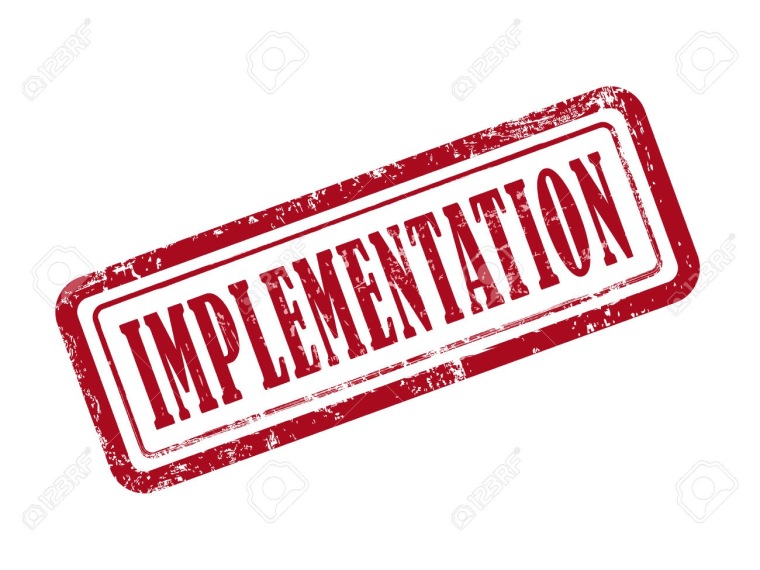





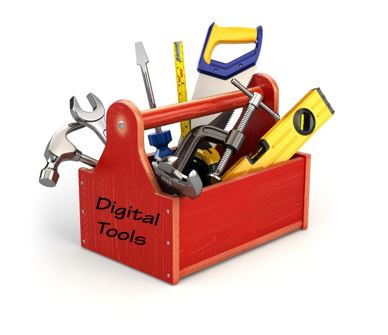







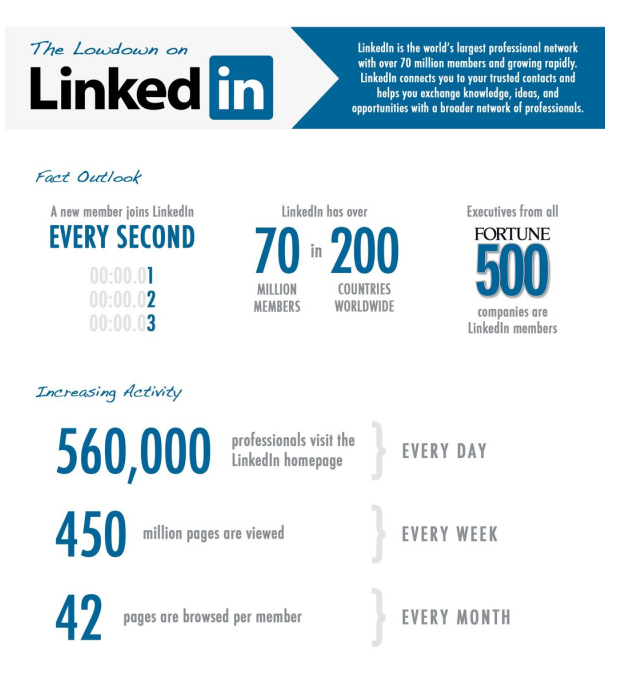
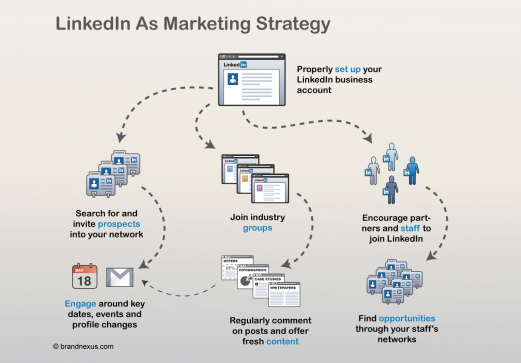
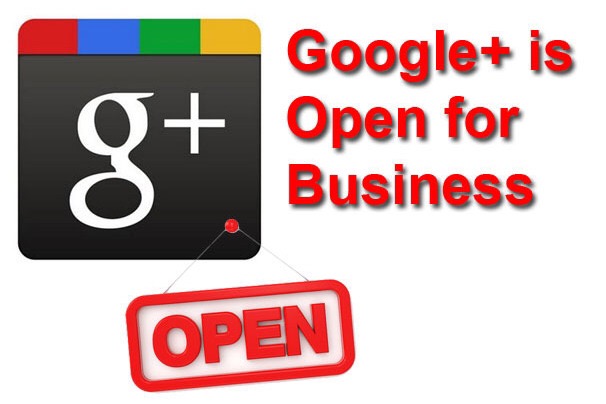

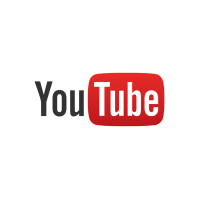


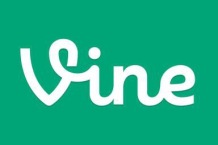
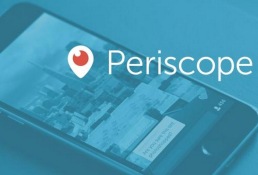
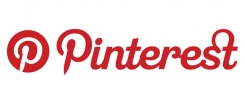

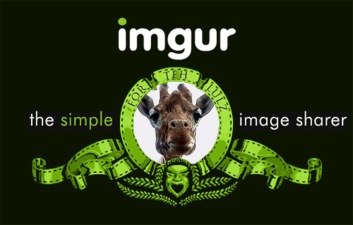

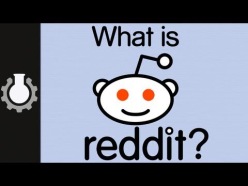

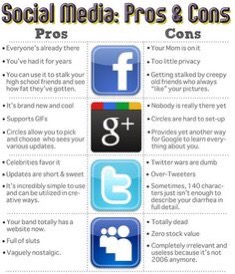
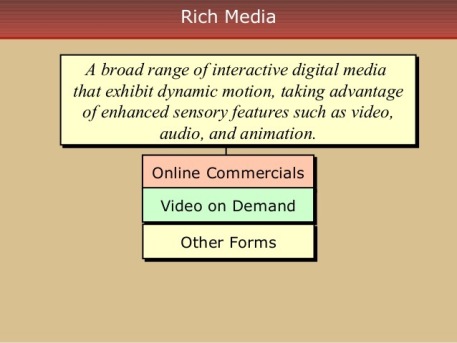
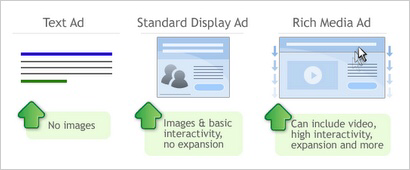

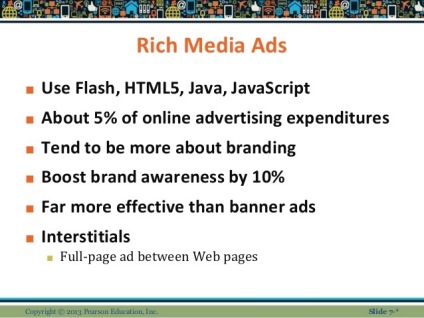
 Here are three popular companies involved in Email Marketing:
Here are three popular companies involved in Email Marketing: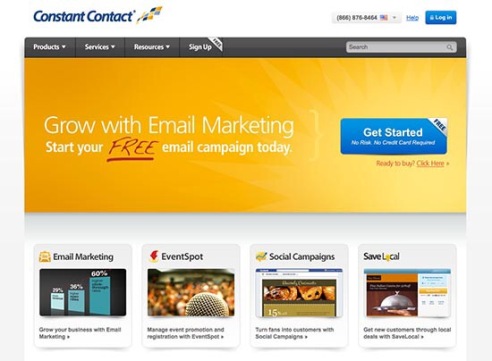

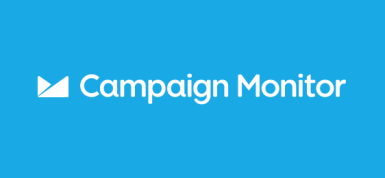


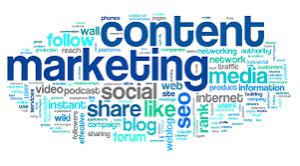





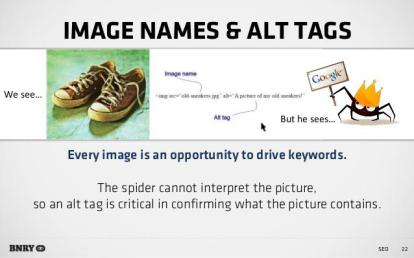 You include images in your articles to get people to read your text. Well-chosen images also strengthen your message. You shouldn’t forget to give those images good
You include images in your articles to get people to read your text. Well-chosen images also strengthen your message. You shouldn’t forget to give those images good A
A 

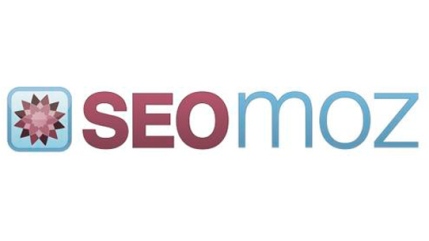



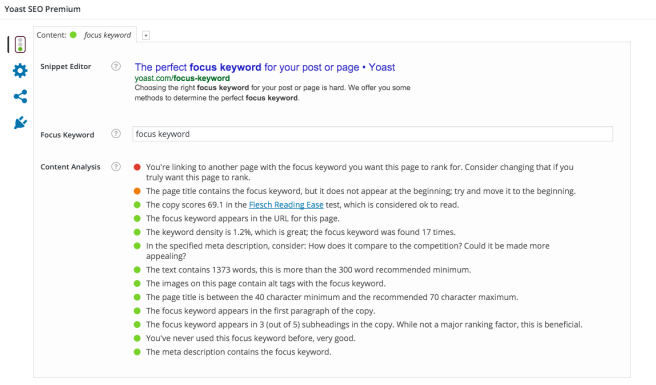




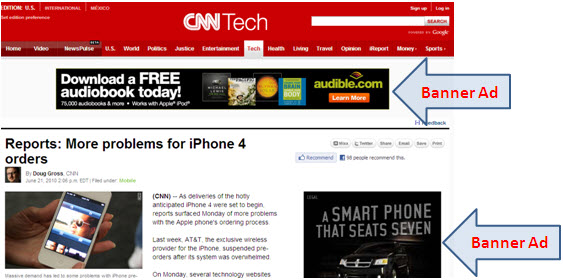

 Advantages of online advertising:
Advantages of online advertising: Disadvantages of online advertising:
Disadvantages of online advertising:









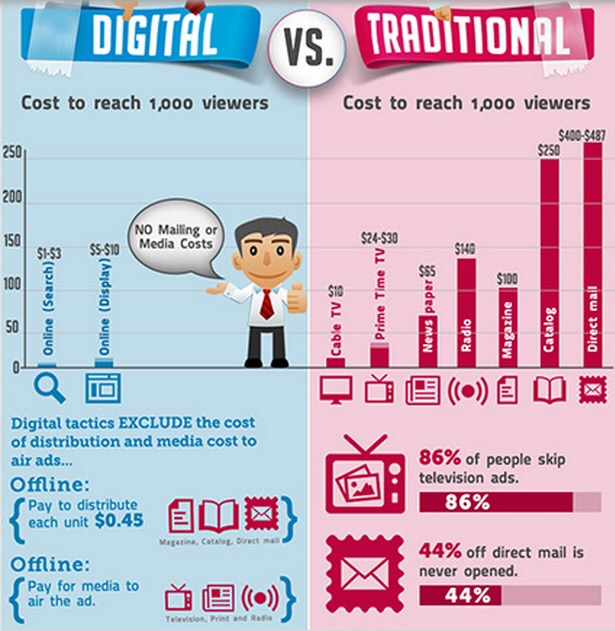

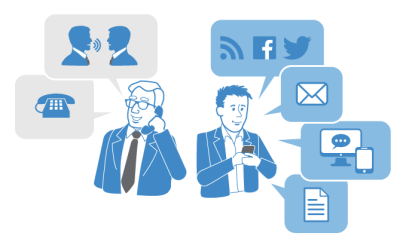
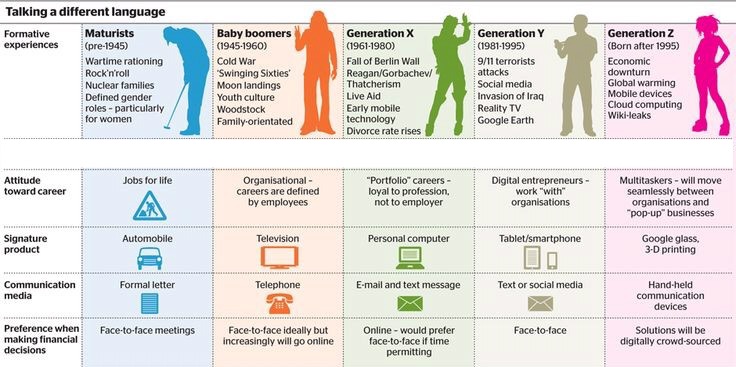









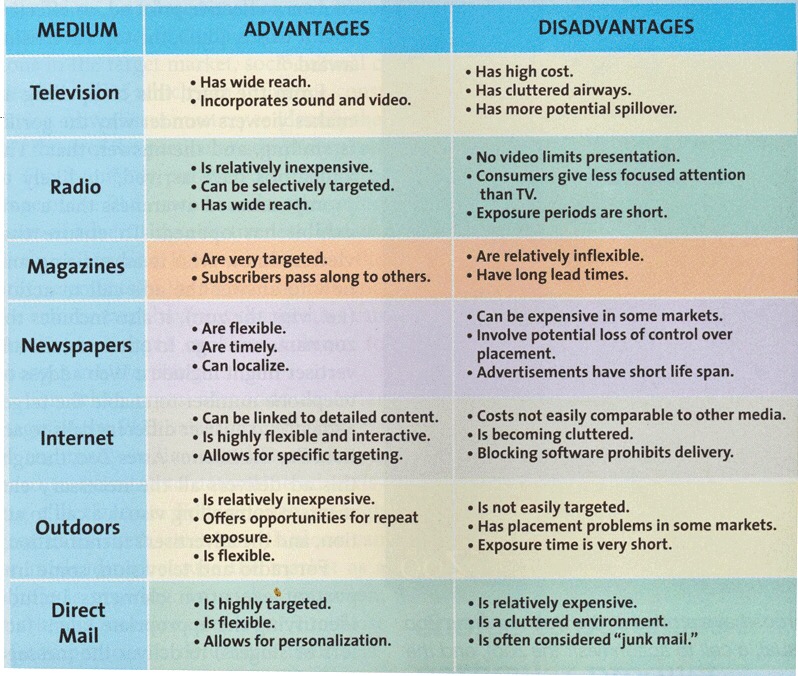




















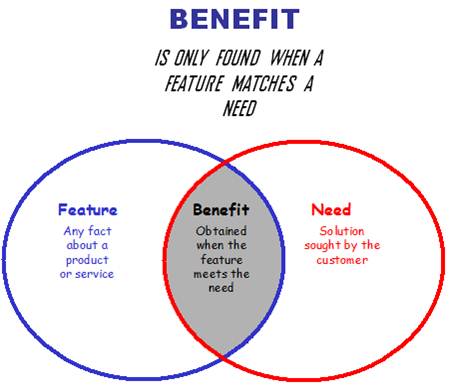



 Extract from a Blog Post
Extract from a Blog Post  Sample of Pay Per Click Advertisements.
Sample of Pay Per Click Advertisements.
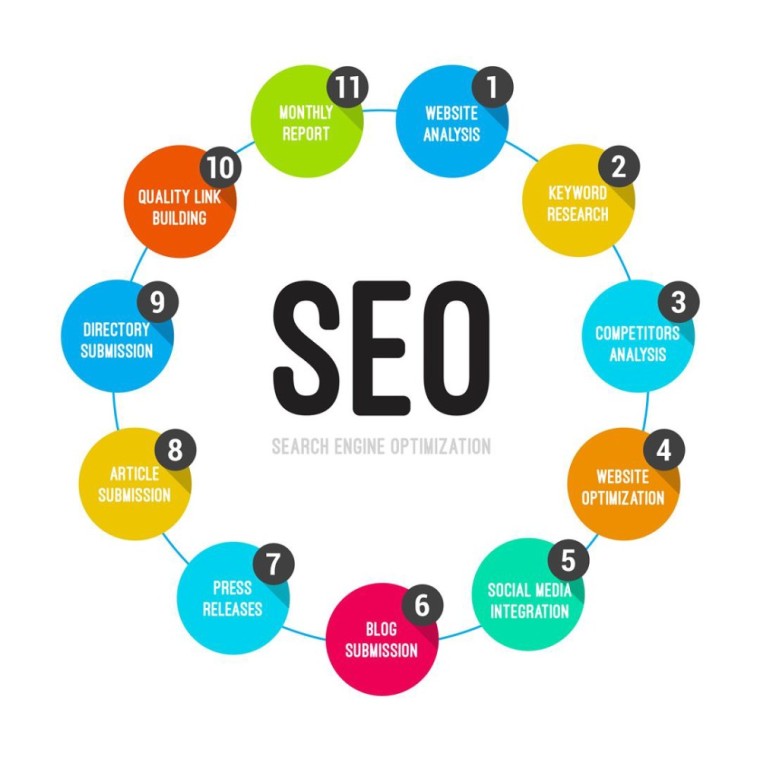






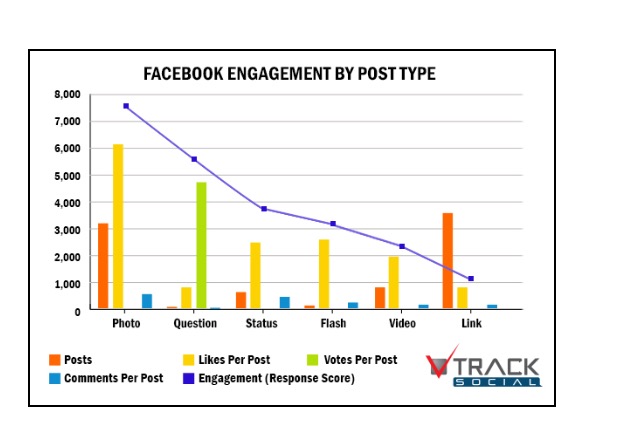 (Data courtesy of Tracksocial)
(Data courtesy of Tracksocial)